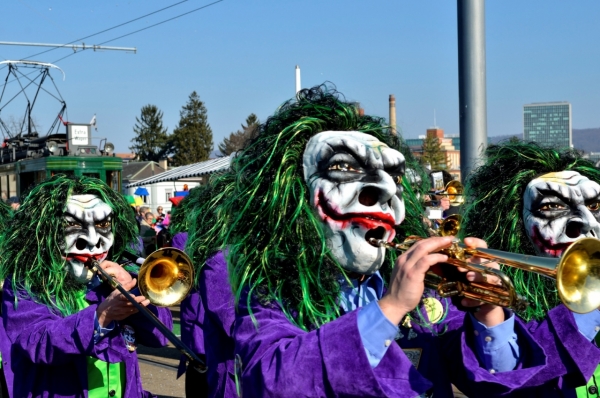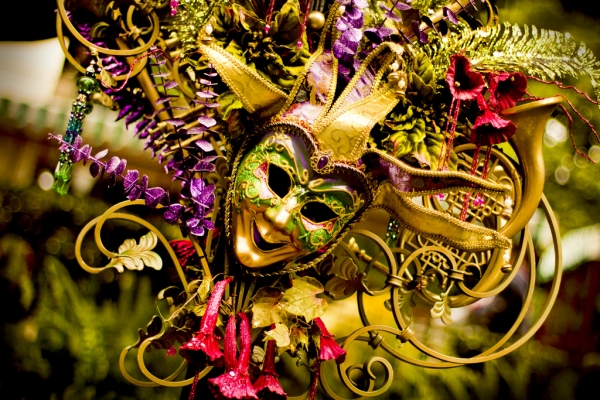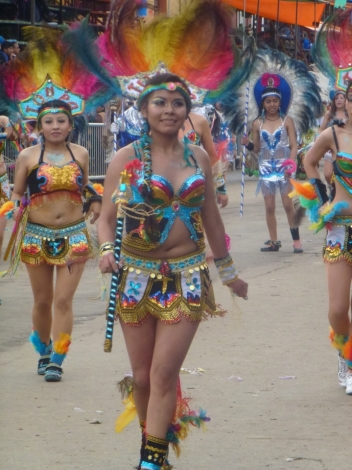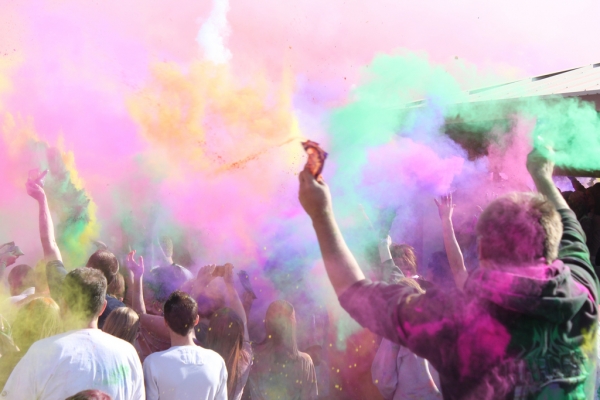Nu pierdeți cele mai bune locuri de muncă!
Abonează-te și săptămânal iți vom trimite un email cu ultimele locuri de muncă disponibile. Introdu adresa ta de email mai jos
Carnival season is upon us and places all over the world will be gearing up for their infamous Carnival celebrations. Whether they’re raucous, non-stop, party until the sun comes up celebrations or festivities that still maintain the religious ceremony, there’s one thing you can be sure - travelling abroad to celebrate carnival is quite the experience. And whilst Carnival or Carnaval is synonymous with the cidade maravilhosa Rio de Janeiro, there are many other alternatives that are just as enthralling and generate that tantalising, pulsating energy of its former counterpart.
Madeira
One of the best-known carnival celebrations in Europe, Madeira’s carnival is a great start if you’re based in Europe and are unable to travel abroad to South America. There are two main parades worth mentioning: The Great Allegorical Parade which takes place on the Saturday of the weekend before Ash Wednesday, with numerous samba groups taking to the streets of Madeira dancing elaborate routines and dressed in extravagant costumes. The other parade is trapalhão which takes place on Shrove Tuesday, with everyone participating in the celebrations. It’s a raucous affair with daring and elaborate costumes and plenty of celebrating and like many other Carnival celebrations, you will need plenty of stamina to last the duration of the festivities.
Basel
Fasnacht is the biggest carnival in Switzerland and in contrast to usual carnival celebrations, the celebrations take place after Ash Wednesday, beginning the Monday after. The festivities begin precisely at 4:00am where all the lights in the old town are switched off and the lanterns of the Carnival cliques are the only form of light in the town. Once the lanterns are lit, Fasnacht begins and the celebrations continue until the Thursday, finishing 72 hours exactly after its start. The Basel parades have strict divide between performers and onlookers, and be prepared to be covered in confetti as confetti attacks are an integral part of the festivity! The celebration is fiercely proud of its Basel heritage which is depicted in its costumes, its traditions and its often satirical sense of humour.
Salvador
Despite Rio being the more famous of the two, you may be surprised to learn that Salvador, a city in the North-East of Brazil, is in fact home to the biggest carnival celebration in the world. If you want to have the Rio Carnival experience but at a lower price tag, more partying and even more opportunity to party with the locals, you should definitely travel abroad to celebrate Carnaval in Salvador. Huge blocos (street parades) take over the streets of Salvador and the partying pretty much never stops for the duration of the 6 day celebration, and beforehand, if you’re lucky enough to be in Salvador for the pre-Carnaval celebrations.
New Orleans
If you fancy an opulent carnival celebration, look no further than New Orleans’ Mardi Gras celebrations. In addition to the sprawling street parades, where beads are thrown out from the floats to tide good luck for the carnival revellers, elegant masquerade balls are also held. It’s a nod to the past and if you’ve got the cash to splash, attending a masquerade ball during Mardi Gras will ensure your celebrations go off with a bang.
Québec
Whilst not a carnival celebration in the traditional sense, Québec’s Winter Carnival celebrations are worth a mention. It maintains certain Carnival features, but with a wintery twist, such as processions with ice sculptures and lights dotted along the course of the parade led by the Carnival’s mascot, Bonhomme (Snowman). Outdoor winter sport events and free public banquets, often held outside to demonstrate Québécois love of the bitter winter weather, take place as well as a 400 people strong masquerade ball. Snow sculpture contests, winter amusement parks and parties feature prominently in the Winter Carnival celebrations as well.
Cape Town
Inaugurated thanks to the 2010 World Cup, Cape Town have continued holding an annual carnival each year to celebrate African culture and diversity. It has since snowballed each year, into an even bigger and better celebration with the start of the parade being marked with a firework display. The carnival puts Cape Town, South Africa and its culture and traditions into the spotlight and it well worth factoring into your visit if you travel abroad to South Africa.
Oruro, Bolivia
A religious festival dating back more than 2,000 years, Oruro’s carnival has maintained both its indigenous and Christian roots by mixing the two together. It incorporates the Christian ritual related to the Virgin of Candelaria, who is said to have miraculously appeared in a mineshaft in Oruro’s richest silver mine, and the indigenous ritual of visiting various deities by paying a visit to the Condor three days before the festival and finishing the celebration a week after the carnival by going south to visit the Snake, to the North to visit the Toad and to the east to see the Ants. During carnival time, there is a three day and three night parade of 48 groups of folk dancers marching towards the sanctuary of the tunnel. Because of the festival’s preserved traditions, it has been awarded an UNESCO Masterpieces of the Oral and Intangible Heritage of Humanity status.
Moscow
Maslenitsa marks the end of winter for Russians. Having its origins in both Pagan and Orthodox Christian traditions, Maslenitsa takes place before the beginning of Orthodox Lent and it is traditionally the last chance to partake in partying, celebrating or consuming meat, fish, dairy products and eggs before the sober, more mindful period of Lent. Maslenitsa activities are typically winter sports such as snowball fights, sledding and sleighing. Like Shrove Tuesday, blini or pancakes are the traditional celebration food to use up all of the eggs and dairy products before the beginning of Lent. At the end of the celebration, an effigy depicting Lady Maslenitsa is stripped and burned on a bonfire to mark the end of Maslenitsa.
Trinidad
In darkness, at 4am marks the start or J’ouvert of Trinidad carnival. Then the energetic rhythms of soca music begin to reverberate throughout the streets and carnival has begun with a bang. Then the next day, the competition begins – bands and groups of performers take to the streets to strut their stuff and compete for the title and the glory of being the best group in Trinidad. Even if you’re not around in Trinidad for carnival, there’s a high likelihood you may stumble across the pre-Carnival preparations as they start on Boxing Day through until the close of Carnival.
India
Again not strictly a Carnival celebration in the traditional sense, however, the festival of color Holi which takes place to mark the beginning of spring has to feature on the list. The celebration entails a carnival of water fights and throwing colored powder. It’s a free-for-all so spoilt sports need not bother going and leave your best clothes at home, this is a celebration for those who want to have fun and worry about the mess later. The celebration culminates with meeting up with family and friends and of course indulging in some delicious Indian food as the emphasis of the celebration is the festival of color and also, love.
Where will you travel abroad to celebrate Carnival?
Sign in to publish a comment




Be the first to comment on this post.